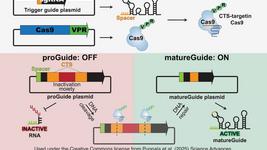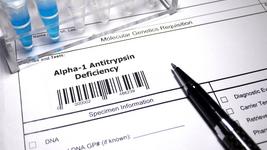CMN Weekly (11 April 2025) - CRISPRMED25 Special
By: Gorm Palmgren - Apr. 11, 2025
This week's CMN Weekly is a special tribute to the CRISPRMED25 conference, which has spanned the entire week. With nearly 400 participants from 34 countries, more than 60 speakers and panellists, and 80 posters, we are proud to call it a success. Below, we present a brief overview of each day to give you a taste of the conference.
Monday 7 April - Virtual event
- CRISPRMED25 opened with the virtual session Transformative Gene Editing: From Rare Disease Models to Clinical Applications, which offered a compelling overview of how gene-editing technologies are reshaping treatment paradigms across a wide range of conditions. Talks covered groundbreaking pre-clinical work on in utero base editing for infantile Krabbe disease, demonstrating high editing efficiency and early intervention potential. Updates from the industry included promising pre-clinical and clinical data from gene-editing therapies for dyslipidaemia, primary hyperoxaluria type 1, and haemophilia A, each using novel platforms—from CRISPR-CasX and proprietary lipid nanoparticles to non-viral transposon-based insertion systems. The session also featured encouraging clinical trial results from an off-the-shelf CAR-T cell therapy, where a CRISPR hybrid RNA-DNA editing approach achieved a high response rate without graft-versus-host disease. Collectively, the session underscored the rapid translation of gene-editing innovations into therapies with the potential to transform care for both rare and common diseases.
- Following the oral presentations, virtual CRISPRMED25 attendees from all over the world engaged in an interactive virtual poster session featuring additional innovations within gene editing. Eleven posters highlighted advances in off-target assessment methods, novel delivery approaches, and next-generation editing templates. The poster topics ranged from innovative DNA modification technologies to simplified methods for creating transgenic models and fast quantification techniques to assess gene-editing outcomes. See all the virtual posters (requires login). You can read a more detailed summary of the CRISPRMED25 virtual event here.
Tuesday 8 April
- After the conference was opened by CMN's editor-in-chief Karen O'Hanlon Cohrt, she passed the word to Professor Virginijus Siksnys, one of the foundational researchers in the field who has shaped genome editing as we know it. His talk highlighted how Cas9 and Cas12 nucleases, which originated as bacterial anti-viral defence systems, are now advancing from research labs into clinical trials as novel therapies for various diseases. He also addressed significant challenges still facing the field - including precise delivery to target tissues, safety concerns related to off-target effects and immune interactions, and the low efficiency of gene insertions. Of particular interest was his discussion of how further exploration and systematic discovery of novel anti-viral defence systems are likely to decode novel enzymatic functions that could be repurposed for technological applications. See the abstract.
- At the special Patient Voice session, Jimi Olaghere spoke about his remarkable journey with sickle cell disease and his experience as a recipient of the first and only approved CRISPR therapy, CASGEVY. Jimi shared moving details of his life with sickle cell disease before treatment, detailing the challenges and limitations he faced on a daily basis. His powerful account of life after CASGEVY provides a compelling real-world demonstration of the life-changing potential of gene-editing technology. Thanks to Jimi for his openness and willingness to share such a personal journey, bringing the patient's voice directly into our scientific community. You can read his story at MIT Technology Review.
- Under the theme Genome Editing: From Pioneering Foundations to Modern Applications, five talks highlighted both the historical roots and cutting-edge innovations shaping the field today. Early breakthroughs in programmable nucleases such as ZFNs and TALENs laid the groundwork for the rise of CRISPR-Cas, which revolutionised genome editing through its simplicity and versatility. Advances continue to emerge, including precision RNA base editing using endogenous enzymes like ADAR, offering safer and more reversible alternatives to DNA editing. A new CRISPR-based electronic platform now enables real-time monitoring of editing efficiency and reagent quality, bridging research and clinical applications. Meanwhile, innovations in the synthesis and ligation of long nucleic acids are expanding the technical possibilities for RNA-based therapeutics and genome engineering.
- The day ended with a joyful poster and networking session with snacks and beverages, during which all the presenters attended their posters and explained their findings to the curious crowd. The posters were divided into three groups: A) Tools, B) Delivery & Safety, and C) Clinical Trials & Functional Genomics.
Wednesday 9 April
- Day two of the CRISPRMED25 conference offered a dynamic mix of science, discussion, and community. The day began with a sunrise fun run through Copenhagen before transitioning into a packed programme of scientific sessions exploring the clinical implementation of gene-editing therapies, the frontiers beyond conventional CRISPR-Cas editing, and how editing outcomes are understood and evaluated. Two panel discussions sparked lively engagement: one addressed the critical issue of equitable patient access to CRISPR-based medicines, while the other tackled the complex regulatory pathways facing these emerging therapies. Sessions on in vivo and in vitro CRISPR screens rounded out the scientific content, and the day concluded with a lively exhibitor evening of networking, food, and games – fostering both collaboration and celebration.
- The session Clinical Implementation of Gene-Editing Therapies: Progress and Solutions highlighted significant strides in translating CRISPR-based technologies into clinical and industrial practice. Talks ranged from novel cancer therapies – including tumour-infiltrating lymphocyte treatments and CRISPR-mediated targeting of chemo-resistant tumours – to promising approaches for rare genetic diseases such as Duchenne muscular dystrophy and Pyruvate Kinase Deficiency. The session also addressed crucial manufacturing challenges and solutions, with updates on new CRISPR sgRNA production pipelines and strategies to reduce off-target effects and improve component stability. Together, the presentations underscored the field's rapid progress towards scalable, safe, and effective gene-editing therapies.
- The late morning session Beyond Conventional CRISPR-Based Genome Editing showcased the field's expanding horizons, focusing on novel tools, computational advances, and structural insights that are pushing genome engineering into new territory. Talks included innovative approaches to transient CRISPRa/i systems for precise gene regulation, computational models for predicting base editing efficiency, and cutting-edge cryo-electron microscopy studies that are enabling the rational design of next-generation CRISPR nucleases. From fine-tuned gene modulation to the development of novel Cas variants, the session illustrated the exciting pace of innovation beyond traditional CRISPR applications.
- The session Understanding the Outcomes of Genome Editing focused on the critical need for accurate characterisation and safety assessment of CRISPR-Cas interventions. Speakers presented a range of advanced tools and platforms for detecting off-target effects, genotoxicity, and editing precision – from single-cell sequencing with Tapestri to comprehensive genotyping workflows and diagnostic toolkits like MEGA and INDUCE-seq. The session also addressed potential risks associated with enhancing editing efficiency, including unintended genomic alterations such as large deletions and chromosomal rearrangements. Together, the talks highlighted the importance of rigorous safety studies and regulatory foresight as genome editing moves closer to widespread clinical use.
- The final scientific session of the day, Functional Genomics – In Vivo and In Vitro CRISPR Screens, showcased the power of CRISPR-based screening technologies in uncovering biological mechanisms and therapeutic targets. Talks ranged from the use of lentiviral base editor screens to dissect intracellular signalling pathways to in vivo AAV-mediated CRISPR screens revealing neuronal vulnerabilities. Researchers highlighted how genome-wide CRISPR-Cas9 screens can identify gene networks and drug response mechanisms in cancer, advancing precision oncology. The potential of combinatorial CRISPR screens to unravel gene-gene interactions and regulatory networks was also explored, marking a new frontier in functional genomics. The session concluded with insights into how CRISPR-based functional screening can optimise AAV vector production for gene therapy, underlining the broad utility of these tools across research and therapeutic development.
Thursday 10 April
- Day three of CRISPRMED25 offered a rich blend of scientific depth and thoughtful dialogue. The morning began with a fun run through Copenhagen, followed by sessions on cutting-edge advances in gene-edited cell therapies and in vivo approaches for treating rare diseases. A standout moment was the special session on Democratising Genetic Medicine, which addressed the global challenge of equitable access to genetic technologies. After lunch, the focus shifted to novel delivery systems for gene editing, highlighting innovations key to therapeutic success. The day concluded with a panel discussion tracing the path to the first genome-editing clinical trials, featuring several of the field's pioneers. It wrapped up with an energetic flash talk competition and interactive poster session hosted by WeDoCRISPR.
- The session Advances in Gene-Edited Cell Therapies showcased cutting-edge progress in using CRISPR-Cas and related technologies to develop next-generation cell-based treatments. Talks covered novel strategies for correcting beta-haemoglobinopathies through base, prime and epigenome editing and the use of homology-directed repair to engineer stem cells for durable therapies targeting diseases like HIV and cystic fibrosis. Speakers also explored how 3D scaffolds can preserve cellular function during haematopoietic stem cell editing and improve outcomes. Promising pre-clinical data on a universal, immune-evasive CAR-T platform targeting CD19 and CLL-1 were presented, alongside innovations in TALEN editing using CssDNA and safety-focused insights into HDR-based CRISPR applications. Together, the presentations highlighted the therapeutic promise and evolving precision of gene-edited cell therapies.
- The session In Vivo Gene Editing for the Treatment of Rare Diseases highlighted the growing potential of CRISPR-Cas technologies to directly correct disease-causing mutations within the body. Presentations demonstrated advances in treating metabolic and neuromuscular disorders, including lysosomal storage diseases and phenylketonuria, using base and prime editing delivered via mRNA-LNPs. Short talks introduced promising non-viral delivery systems for cystic fibrosis, innovative splicing modulation for Usher syndrome, and base editing strategies for collagen VI-related dystrophies and limb-girdle muscular dystrophies. Together, the session underscored how in vivo gene editing is evolving into a transformative therapeutic option for patients with previously untreatable rare diseases.
- The session Innovations in Gene-Editing Delivery Systems spotlighted a wave of transformative technologies aimed at overcoming one of gene editing's greatest challenges: effective delivery. Presentations ranged from non-viral platforms using novel CRISPR-associated nucleases to precision-targeted lipid nanoparticles (SORT LNPs) capable of correcting mutations in vivo. Researchers also showcased engineered lentiviral particles for in vivo delivery of CRISPR RNPs and AI-driven tools for designing protein binders to enhance delivery specificity and AAV vector targeting. Alongside these technological advances, scalable manufacturing solutions were highlighted as key to translating these innovations into real-world therapies. Collectively, the session underscored how delivery breakthroughs are unlocking the full therapeutic potential of gene editing.
Friday 11 April
- The final day of CRISPRMED25 wrapped up the conference with a strong focus on technological progress and scientific discovery. Following a final morning fun run through Copenhagen, attendees were treated to presentations on emerging methods in in vivo genome editing and powerful new tools for exploring gene function. Talks demonstrated how recent innovations are expanding the therapeutic potential of CRISPR and deepening our understanding of genetic mechanisms. The day concluded with a closing address by CRISPR Medicine News, including prize announcements and acknowledgements, before participants gathered for light refreshments and an optional boat tour through Copenhagen's canals – a fitting end to a week of collaboration, innovation and inspiration.
- This morning's session at Technological Advances Within In Vivo Genome Editing spotlighted a wide array of technological innovations aimed at advancing in vivo genome editing. The talks included the development of a highly precise Cas9 variant, ePsCas9, which was designed for therapeutic use, and new insights into gene editing approaches for ultra-rare neuromuscular diseases. Presenters also shared promising results from genome editing strategies targeting cardiovascular conditions, using tools such as Cas12 variants, base editors and prime editors in human iPSC-derived heart cells. Advances in delivery systems featured prominently, with long-circulating lipid nanoparticles enabling efficient gene transfer to haematopoietic stem cells and bacteriophage vectors showing potential for targeted microbiome therapies. These developments reflect the field's accelerating progress towards safe, effective, and disease-specific gene-editing interventions.
- The final scientific session, Functional Genomics - Discovery and Function Studies, explored how CRISPR-based technologies are transforming our ability to interrogate gene function and uncover biological mechanisms. Talks highlighted high-throughput tools like the IN4MER platform for synthetic lethality screening, as well as the use of CRISPR perturbations to study bioactivity across drug modalities. Researchers also shared insights from base editor libraries designed to probe protein interaction motifs across the proteome and novel programmable nucleases, enabling the selective elimination of cancer cells. Additional presentations showcased single-cell techniques for mapping enhancer landscapes and the use of iPSC-derived cardiac models to study Duchenne muscular dystrophy. The session demonstrated how functional genomics is increasingly central to both basic research and therapeutic discovery.
We hope to see you again next year April in Copenhagen at CRISPRMED26!
To get more CRISPR Medicine News delivered to your inbox, sign up to the free weekly CMN Newsletter here.
Tags
CLINICAL TRIALS
IND Enabling
Phase I
Phase II
Phase III
Gastric Cancer and Colorectal Cancer, CRC, (NCT07166263)
Sponsors:
Base Therapeutics (Shanghai) Co., Ltd.
Sponsors:
Base Therapeutics (Shanghai) Co., Ltd.
IND Enabling
Phase I
Phase II
Phase III
Relapsed or Refractory Acute Myeloid Leukemia, AML, (NCT06541444)
Sponsors:
Base Therapeutics (Shanghai) Co., Ltd.
Sponsors:
Base Therapeutics (Shanghai) Co., Ltd.
IND Enabling
Phase I
Phase II
Phase III







